Main menu
Common skin conditions

NEWS
Join DermNet PRO
Read more
Quick links
Synthetic wound dressings — extra information
Introduction
Ideal wound dressing
Classification
Wound types and dressings
Adverse effects
Introduction
Synthetic wound dressings originally consisted of two types; gauze-based dressings and paste bandages such as zinc paste bandages. In the mid-1980s the first modern wound dressings were introduced which delivered important characteristics of an ideal wound dressing: moisture keeping and absorbing (e.g. polyurethane foams, hydrocolloids) and moisture keeping and antibacterial (e.g. iodine-containing gels).
During the mid 1990s, synthetic wound dressings expanded into the following groups of products:
- Vapour-permeable adhesive films
- Hydrogels
- Hydrocolloids
- Alginates
- Synthetic foam dressings
- Silicone meshes
- Tissue adhesives
- Barrier films
- Silver- or collagen-containing dressings.
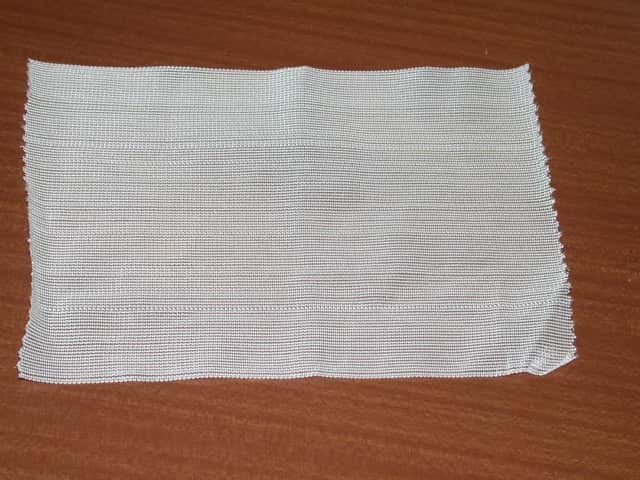
Silver-containg dressing
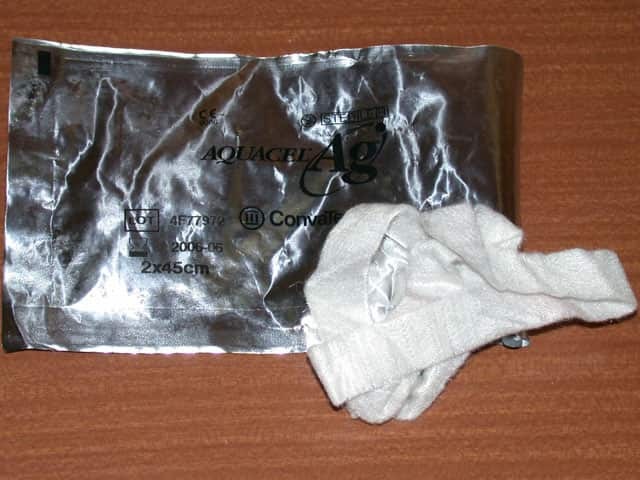
Silver-containg dressing
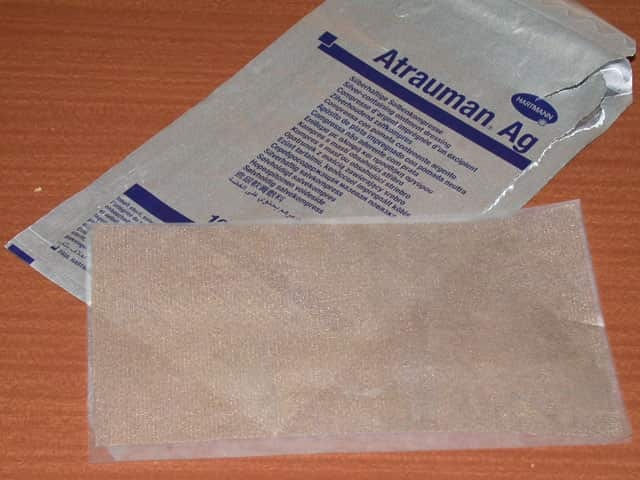
Silver-containg dressing
Ideal wound dressing
No single dressing is suitable for all types of wounds. Often a number of different types of dressings will be used during the healing process of a single wound. Dressings should perform one or more of the following functions:
- Maintain a moist environment at the wound/dressing interface
- Absorb excess exudate without leakage to the surface of the dressing
- Provide thermal insulation and mechanical protection
- Provide bacterial protection
- Allow gaseous and fluid exchange
- Absorb wound odour
- Be non-adherent to the wound and easily removed without trauma
- Provide some debridement action (remove dead tissue and/or foreign particles)
- Be non-toxic, non-allergenic and non-sensitising (to both patient and medical staff)
- Sterile.
Classification of wound dressings
Synthetic wound dressings can be broadly categorized into the following types.
Type |
Properties |
||
|---|---|---|---|
Passive products |
Traditional dressings that provide cover over the wound, eg gauze and tulle dressings |
||
Interactive products |
Polymeric films and forms which are mostly transparent, permeable to water vapour and oxygen, non-permeable to bacteria, eg hyaluronic acid, hydrogels, foam dressings |
||
Bioactive products |
Dressings which deliver substances active in wound healing, eg hydrocolloids, alginates, collagens, chitosan, keratin |
||
Wound types and dressings
The following table describes some of the many different types of wound dressings and their main properties.
Dressing type |
Properties |
Image |
|||||||
|---|---|---|---|---|---|---|---|---|---|
Gauze |
|
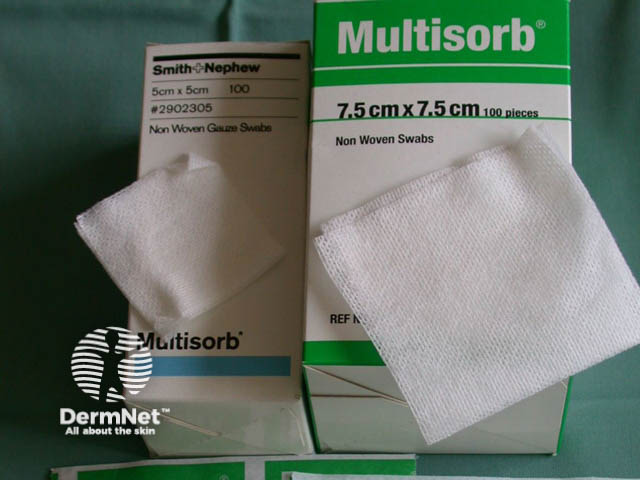
|
|||||||
Tulle |
|
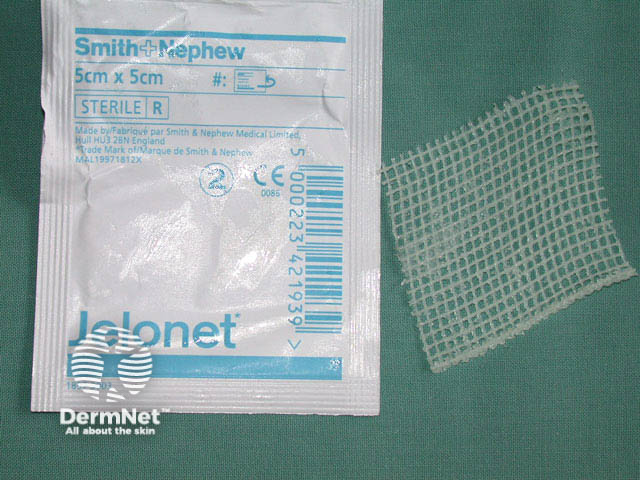
|
|||||||
Semipermeable film |
|
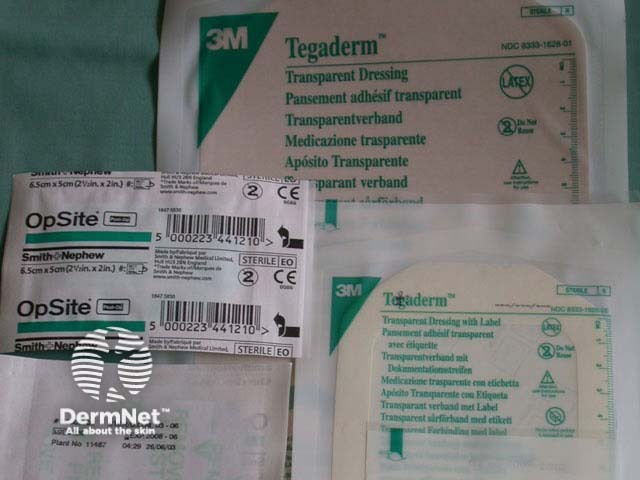
|
|||||||
Hydrocolloids |
|
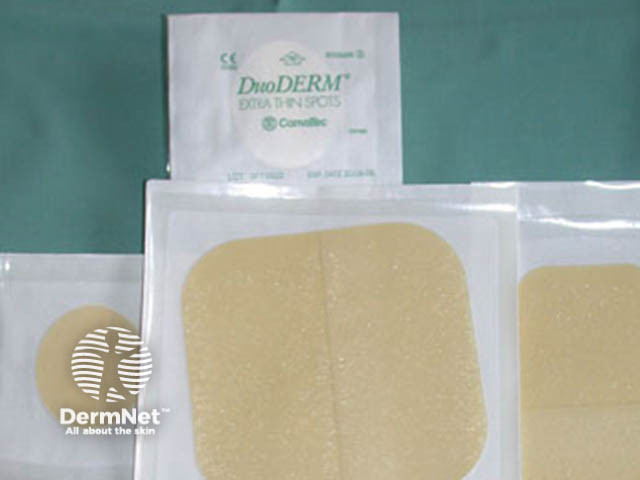
|
|||||||
Hydrogels |
|
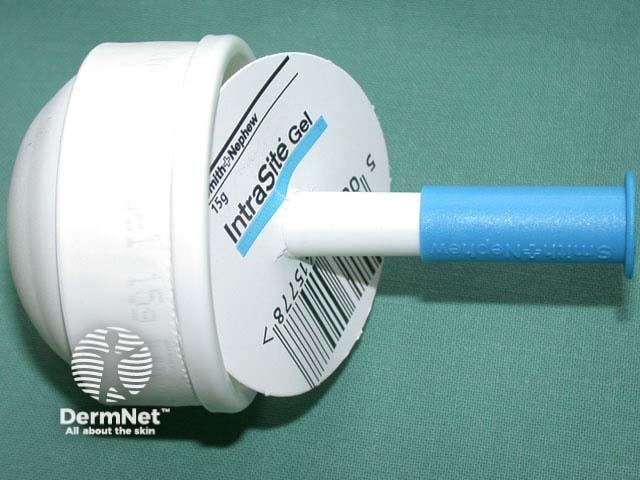
|
|||||||
Alginates |
|
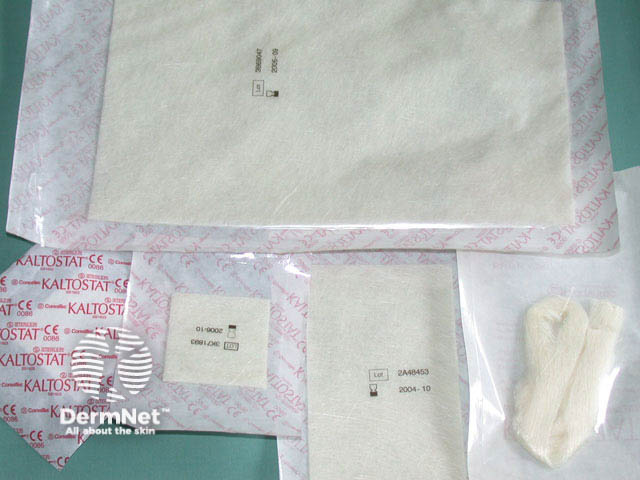
|
|||||||
Polyurethane or silicone foams |
|
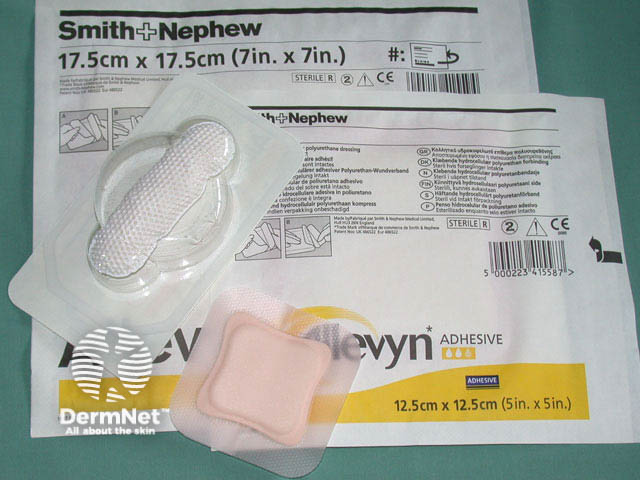
|
|||||||
Hydrofibre |
|
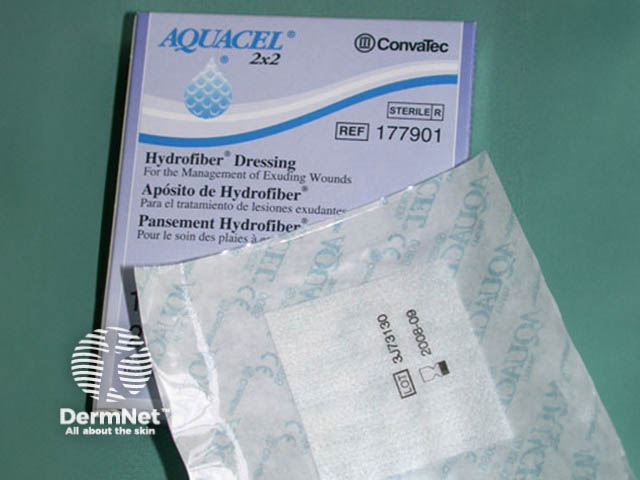
|
|||||||
Collagens |
|
||||||||
Different types of wounds and the different stages of a healing wound require different dressings or combinations of dressings. The following table shows suitable dressings for particular wound types.
Image |
Wound type |
Dressing type |
||||
|---|---|---|---|---|---|---|
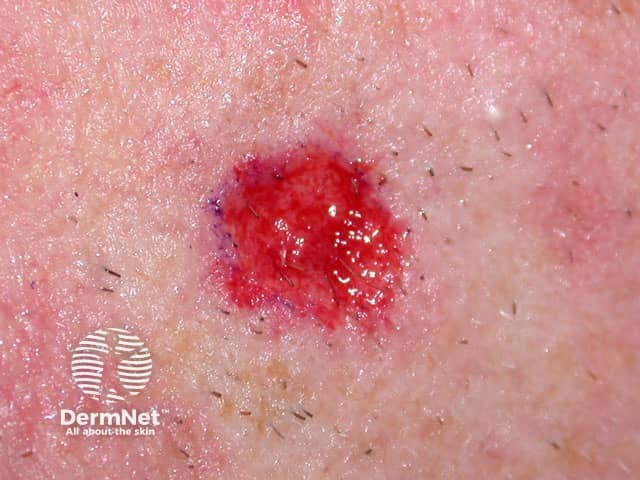
|
Clean, medium-to-high exudate (epithelialising) |
|
||||
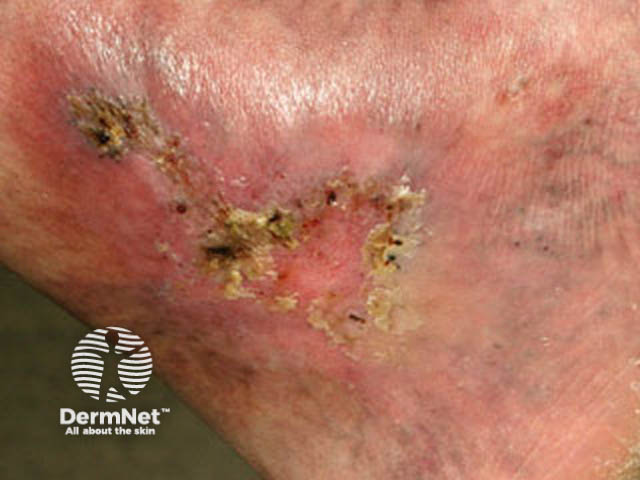
|
Clean, dry, low exudate (epithelialising) |
|
||||
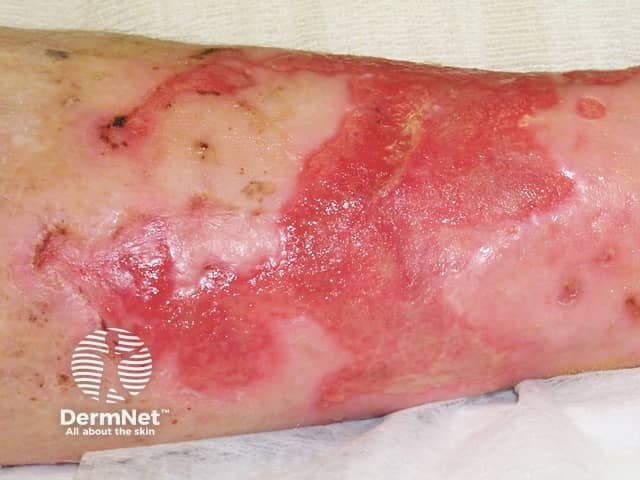
|
Clean, exudating (granulating) |
|
||||
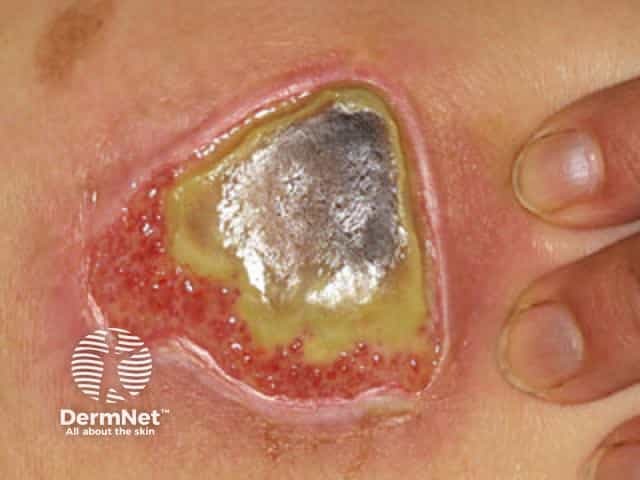
|
Slough-covered |
|
||||
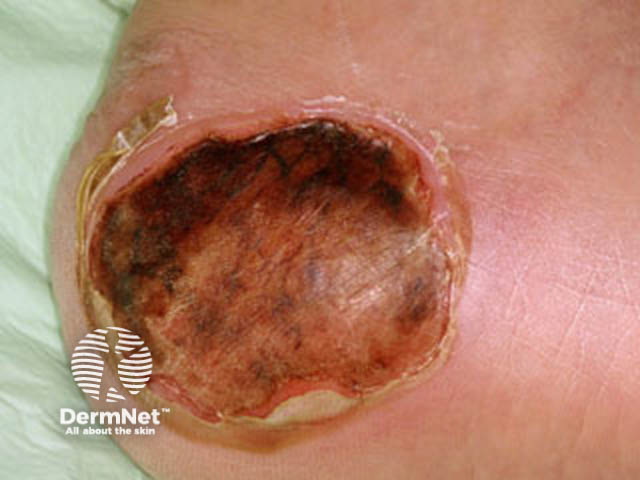
|
Dry, necrotic |
|
||||
The dressings may require secondary dressings such as absorbent pad and bandages.
Adverse effects of dressings
Wound dressings can cause problems, including:
- Maceration (sogginess) of surrounding skin (change dressing frequently and use a more absorbent dressing)
- Irritant contact dermatitis (protect skin with emollient or barrier film)
- Allergic contact dermatitis (uncommon: change dressing type, apply topical steroids)
Bibliography
- Fonder MA, Lazarus GS, Cowan DA, Aronson-Cook B, Kohli AR, Mamelak AJ. Treating the chronic wound: A practical approach to the care of nonhealing wounds and wound care dressings. J Am Acad Dermatol. 2008;58(2):185–206. doi:10.1016/j.jaad.2007.08.048. Journal
- Jones V, Grey JE, Harding KG. Wound dressings. BMJ. 2006;332(7544):777–80. doi:10.1136/bmj.332.7544.777. Journal
On DermNet
Other websites
- World Wide Wounds
- Chronic wounds: advanced wound dressings and antimicrobial dressings — NICE advice, March 2016
- Wound care products — NICE advice, February 2016
